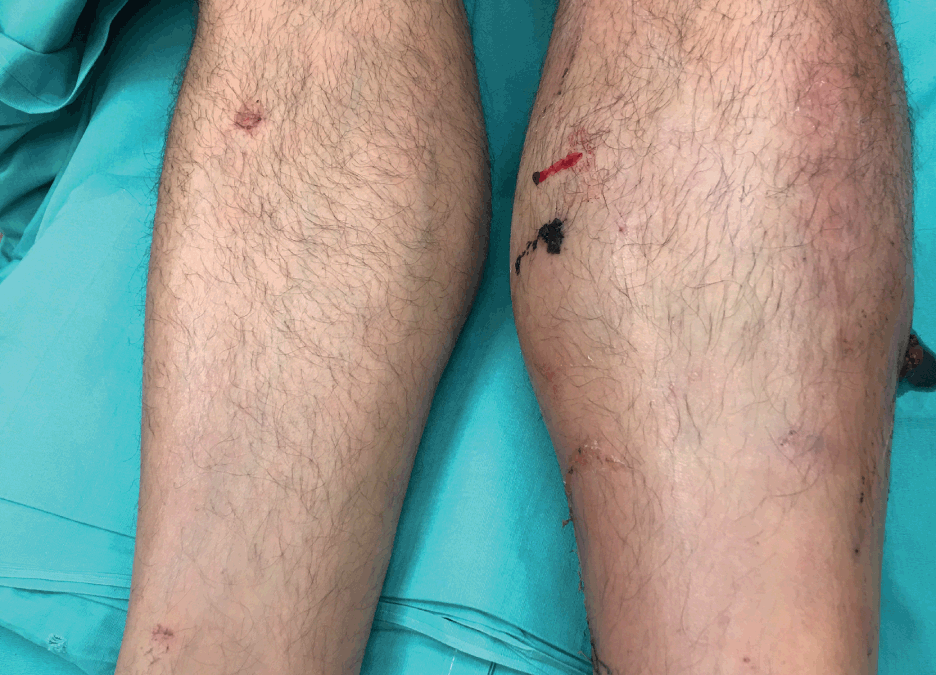Background
Acute compartment syndrome (CS) is a true orthopedic emergency that occurs when pressure within a compartment rises to dangerous levels. Increased pressure most often results from increased volume within a fixed compartment (hematoma, edema, traumatic injury). The increased pressure reduces venous and arterial flow, leading to tissue ischemia and necrosis.
Causes
CS is most common in males under the age of 35. This population tends to have greater muscle bulk, stronger fascia, and a higher risk for high-force injuries. Fractures are the most common underlying cause of CS, and while CS most commonly occurs within 24 hours of the injury, it can be delayed for days.
There are many other conditions that can predispose patients to developing CS: crush injuries, even in the absence of a fracture, may lead to elevated pressures. Soft tissue infections, hematomas, tight-fitting casts, DVT, and circumferential burns are just some of the other causes. Keep in mind that an open injury does not exclude the diagnosis of compartment syndrome.

Diagnosis
Severe pain is the earliest symptom. Healthcare providers should be very suspicious when the patient is in pain that seems out of proportion to the injury, and when there is pain with gentle, passive stretching of the toes or fingers.
We all learned the “6 Ps” of CS: Pain, Pallor, Pulselessness, Paresthesias, Poikilothermia, and Paralysis. While these are the classic symptoms/signs, be aware of the fact that some may be very late manifestations. To put it another way: by the time a patient has developed paralysis or lost a pulse, it is likely that significant damage to the underlying tissues has already occurred. Exam can reveal pain with palpation, pain with passive stretch, a tense or firm compartment, swelling, or decreased pulse or capillary refill. Creatinine kinase levels should be checked as rhabdomyolysis is present in nearly half of traumatic CS cases. Once suspected, definitive diagnosis involves checking the intra-compartmental pressure.
Pressures > 30 mmHg are generally considered abnormal and warrant orthopedic evaluation. However, factors such as age, blood pressure, and underlying conditions make identifying an absolute number difficult. Furthermore, different compartments have different pressure thresholds. If there is high clinical suspicion, obtain surgical consultation. If the pressure is normal, consider repeating a pressure check after a brief period of observation.
Treatment
Once it has been diagnosed, urgent fasciotomy is necessary. Fasciotomy within 6 hours of symptom onset usually results in complete recovery. Delaying fasciotomy significantly increases the likelihood of permanent muscle and nerve damage.
Pitfalls
- Compartment syndrome is a rare condition, but one that every provider should be diligent in considering. Even if you don’t check a pressure to rule it out, document that you considered it and why you didn’t think it was necessary to take the next step. Just leaving it off the chart completely is a medicolegal risk.
- Do not rely too heavily on the ”6 P’s”. Pain and swelling are the most common initial findings and are enough to warrant consideration of compartment syndrome.
- Perform and document a thorough physical exam making sure to include sensory, motor, and vascular findings.
- Do not hesitate to consult an orthopedic surgeon: even in patients with an initial normal compartmental pressure, if clinical suspicion is high, observe the patient and recheck the pressure.




